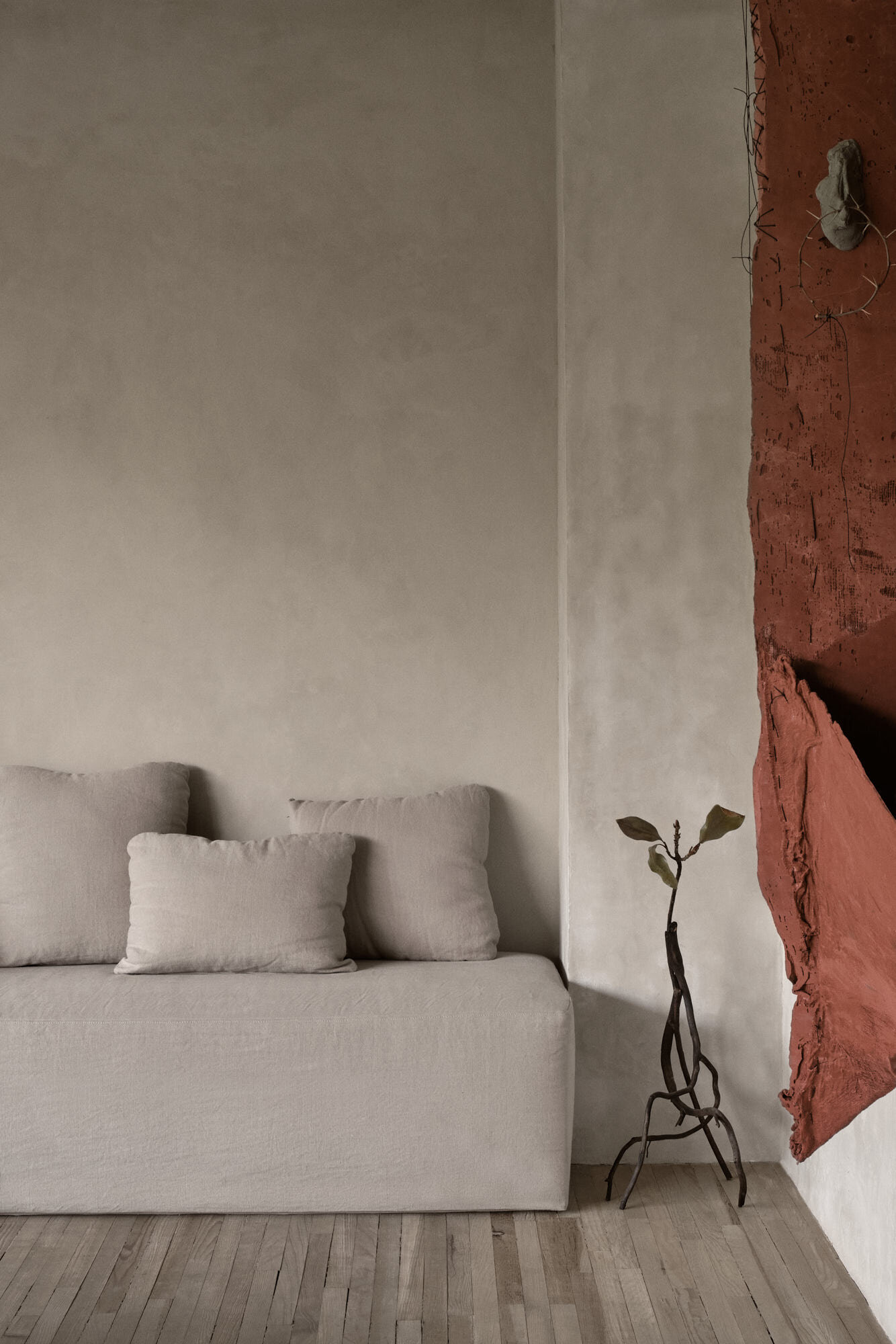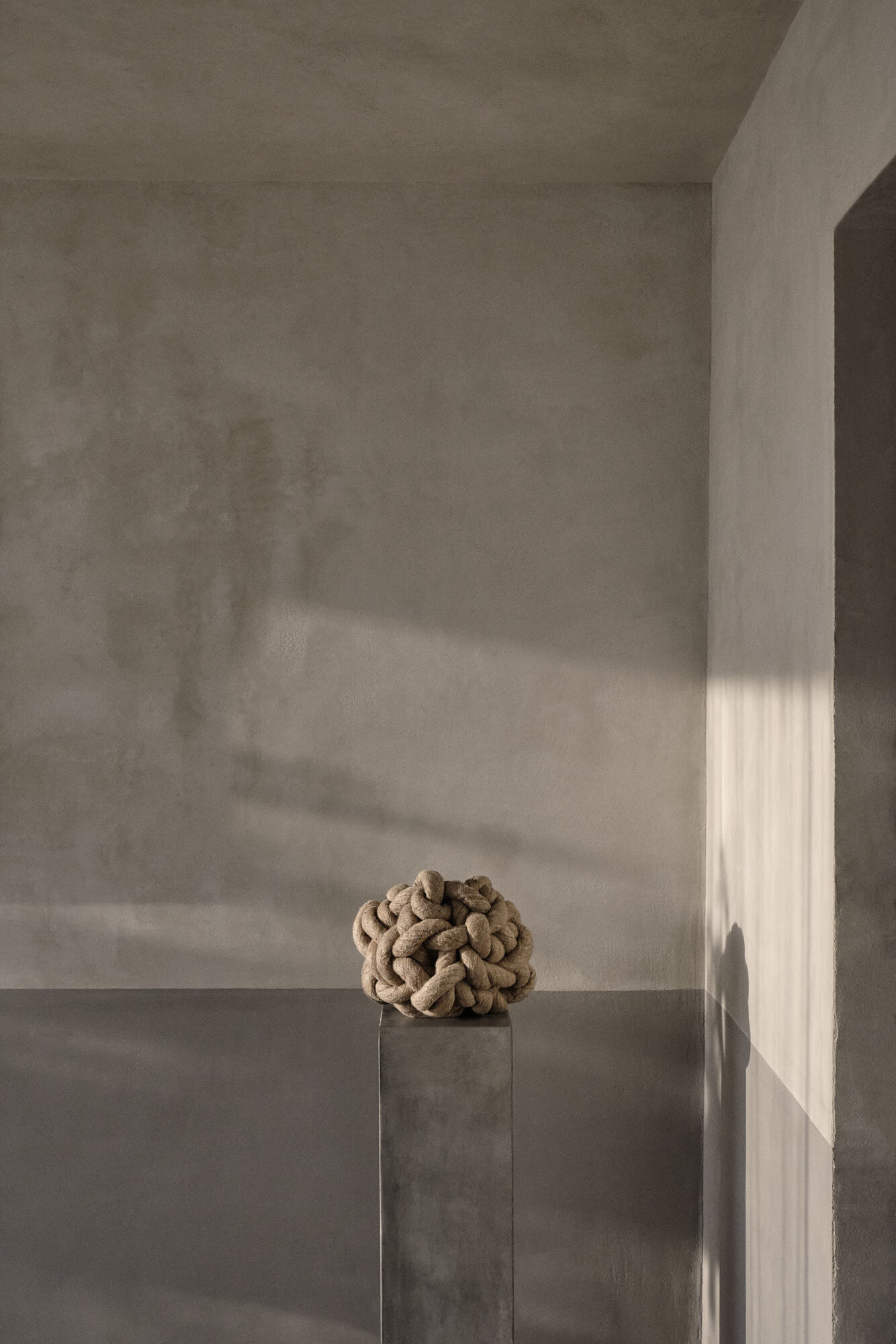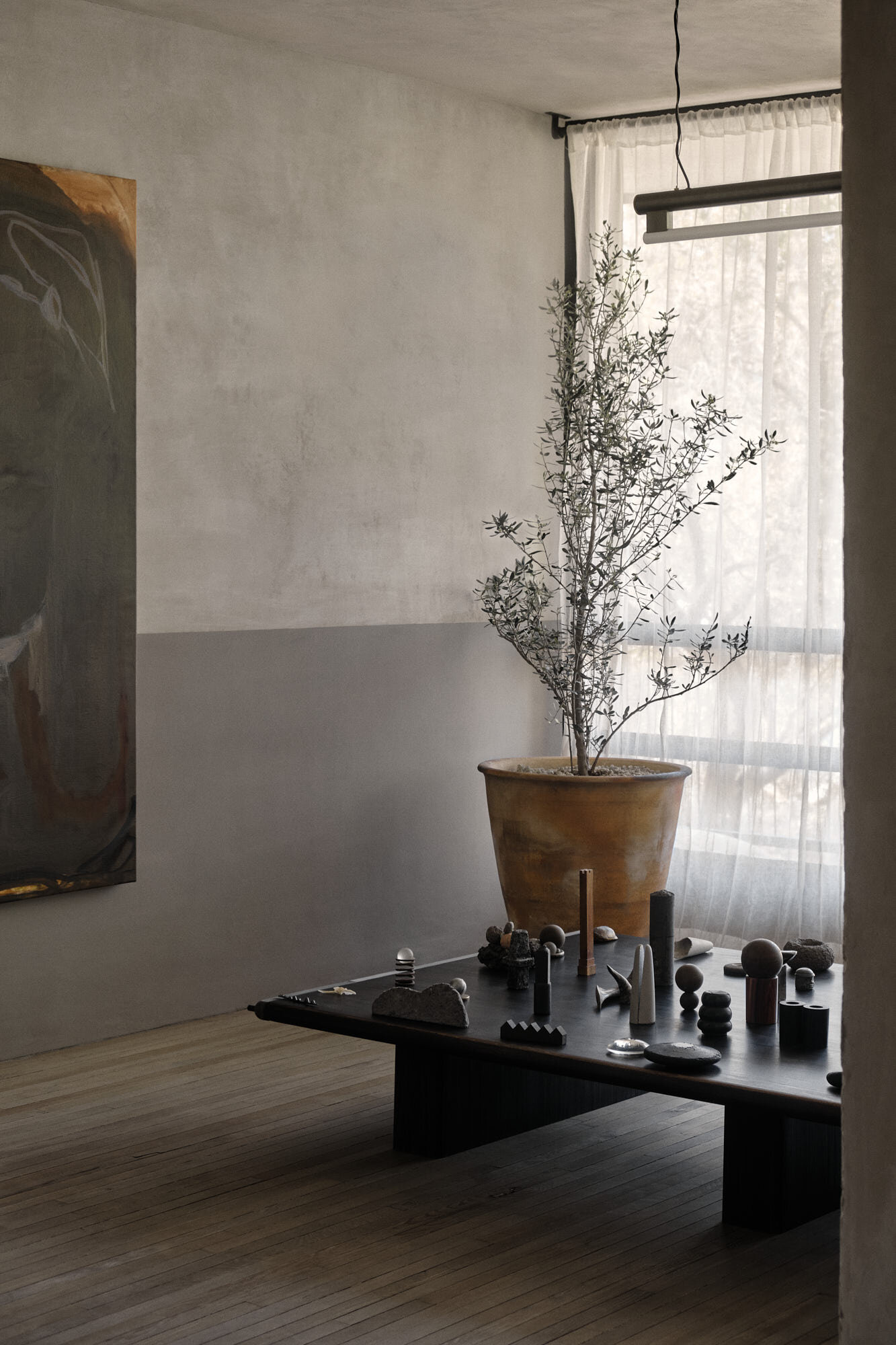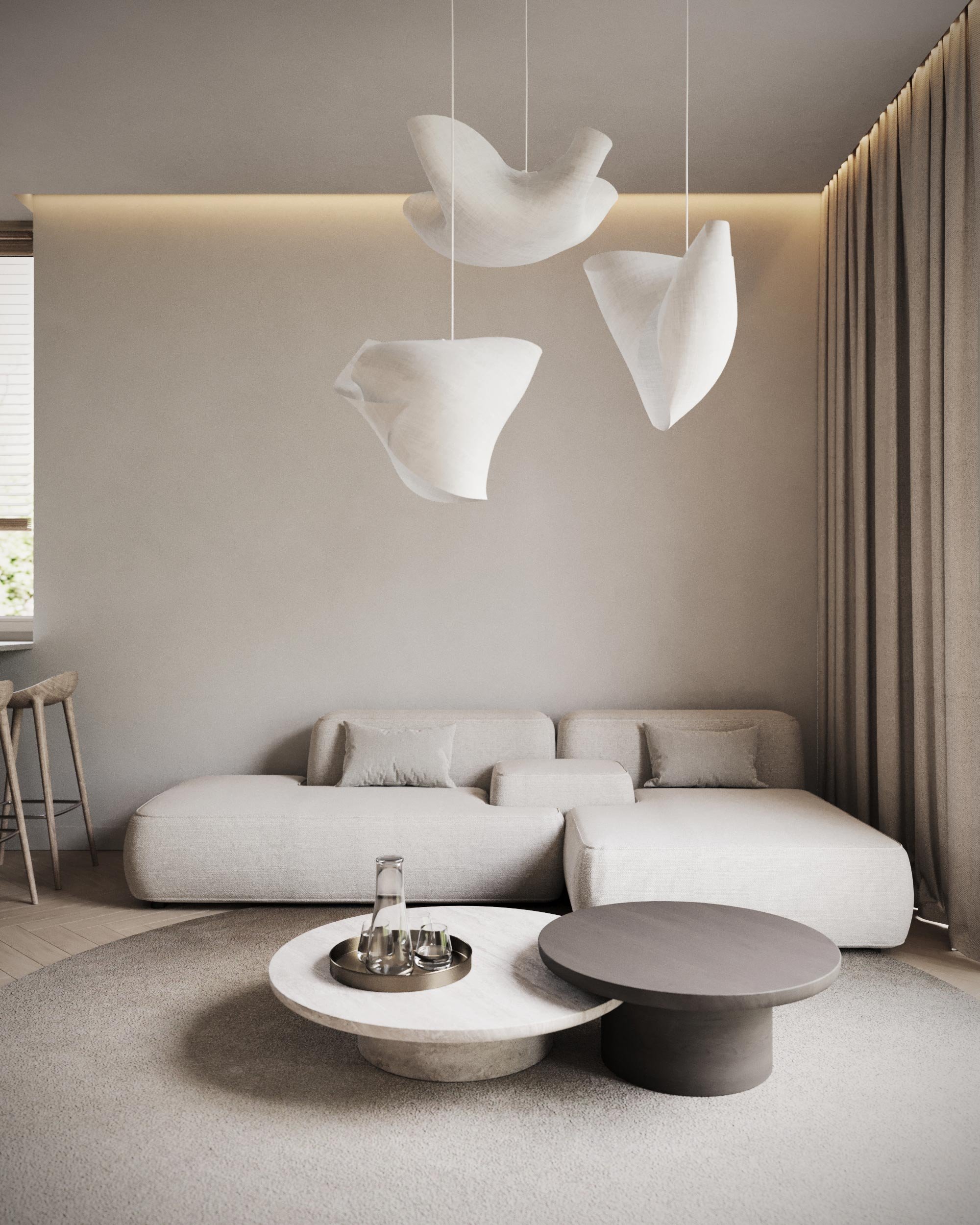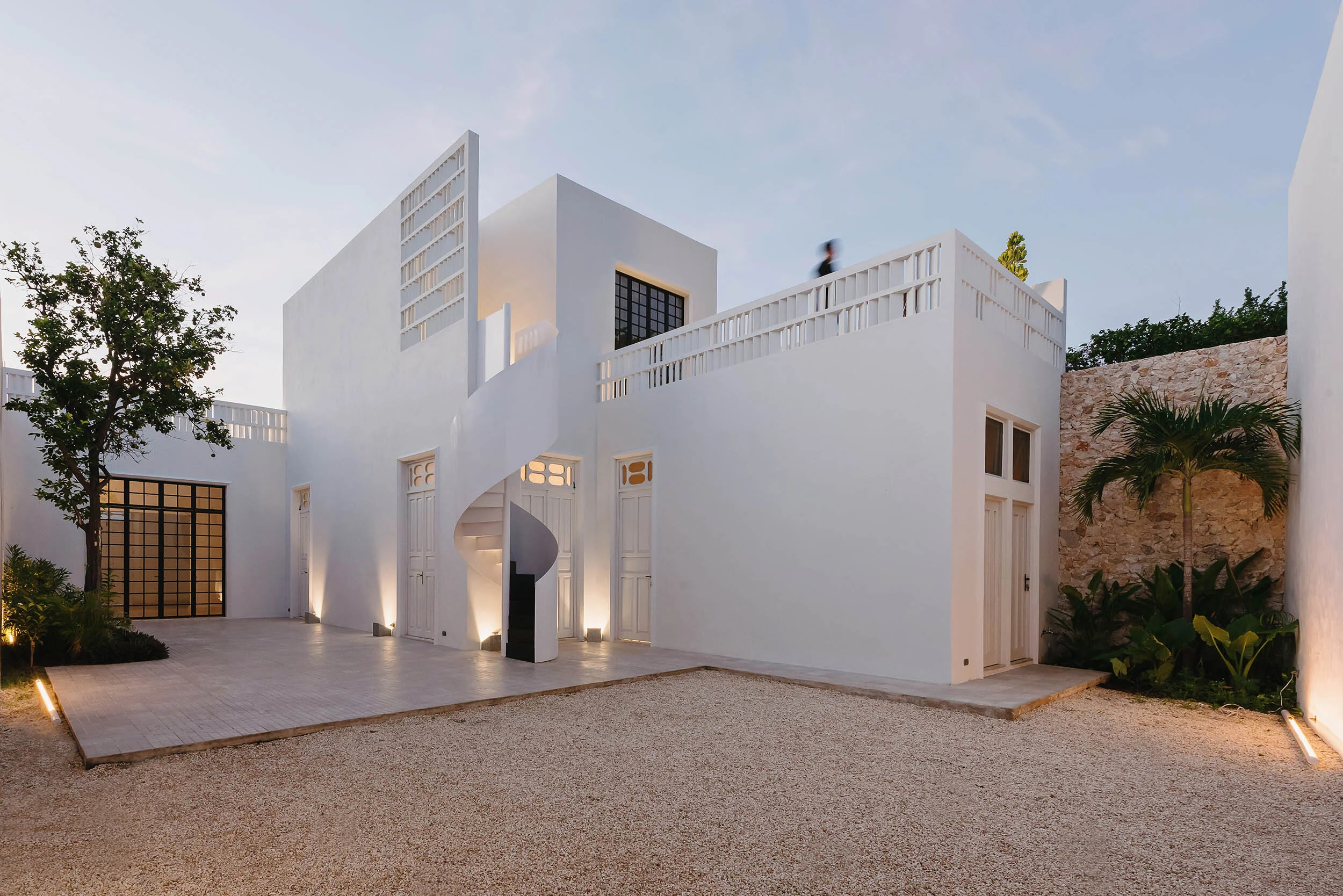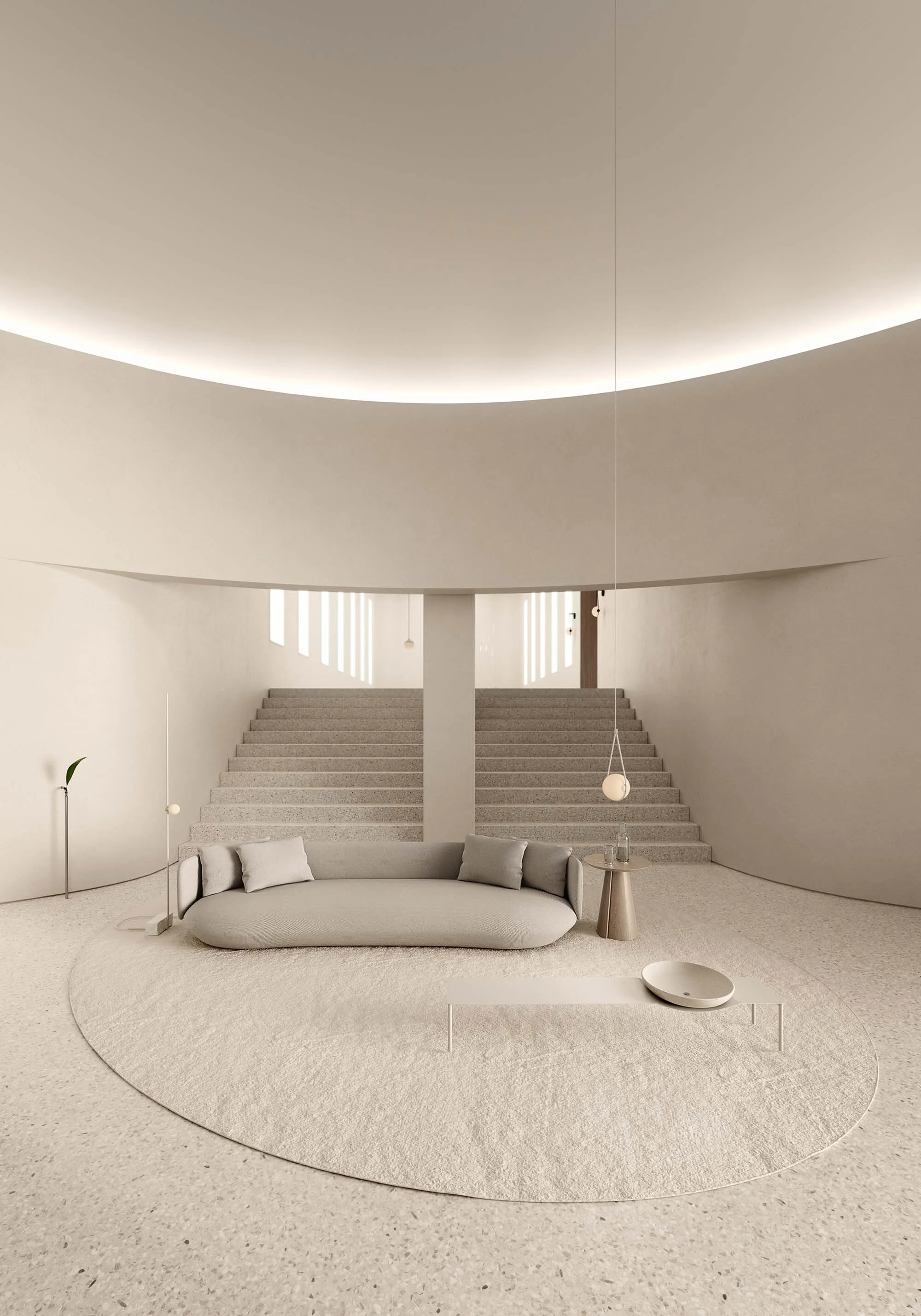Bettina Kiehnle Brings Culture and Simplicity to the Highly-Curated Home
Bettina Kiehnle Brings Culture and Simplicity to the Highly-Curated Home
Discovering the Natural Beauty of Studio IMA’s Collection
Name:
Studio IMA
Bettina Kiehnle
Photography:
Courtesy Studio IMA
Alex Lesage
Styling:
Emmanuelle Roque
Words:
Marissa Stempien
Understanding what makes a house a home is a talent of curator and designer Bettina Kiehnle of Studio IMA. With her apartment doubling as both a living space and a gallery, she sees the beauty in finding the perfect piece for her home—artwork that balances both culture and inspiration, but fills the space with a natural simplicity. With an apartment that plays double duty as a gallery and store (not to mention a place to lay her head), she invites visitors in by appointment only to look over her highly-curated content of work from both local Mexican and international artists.
With a strict aesthetic, Bettina looks for pieces that speak to her regardless of where the artist is from. Nordic, Japanese, Latin American—it’s the integrity and ingenuity of the pieces that call her to bring them into her home gallery, Studio IMA. As she notes, she would never sell anything in her galley that she wouldn’t want in her own home. Rather she looks for harmony between both. Here, she talks about how she finds that balance and brings the beauty of natural artistry into her—and subsequently your—home.
Visual Pleasure Magazine: Can you tell us a bit about your background and what lead you to open your interior design studio and gallery in the heart of Mexico?
Bettina Kiehnle: My passion for art and design comes from a very young age. I grew up in a family that loves art design and since I was a child this started to attract my attention. I have been fortunate to travel to many places, and since I was little my parents and my uncle and aunt took me to all the museums and galleries. Later I started to accompany my mother to buy art, decorations, and furniture for her house. And little by little it interested me more and more.
I could say my first project was in high school, and it was my own bedroom! Constantly, for 10 years (until I left my parents’ house), I changed the decoration of my room. For years I was buying objects and furniture for my bedroom. I also learned a lot from magazines and books, visiting shops and galleries, and listening to conversations. I am very curious and if something interests me, I start to investigate!
My passion and my taste for architecture and design was so clear that I applied to study architecture at IBERO University in Mexico City. They accepted me and a month before starting I decided to change my BA to Communication. (I don’t know why!) I worked in media for years and even did a Masters in Communication too. But I was never so passionate about it and I had always had the desire to do something with art and design, but I did not know how to start.
It was while doing my masters in London and LA that I started developing the concept of IMA. This was over four years ago, and apart from studying for my master's degree, I dedicated myself to visiting millions of shops, showrooms, vintage markets, galleries, art and design fairs, and museums. I also bought magazines and books on design, architecture, and art to study more on these topics. I spent hours on Instagram looking at accounts of designers, brands, and architects and I kept saving photos of the things I liked. Where I went or traveled I looked for the best designer stores and visited and analyzed them, and that's how the IMA inspiration started.
While living in the United States, I came across concepts like The Line and The Future Perfect and fell in love with their concept. What both spaces do is decorate houses and apartments with an impressive selection of pieces of well-cured international design, and all the pieces are for sale. These two stores/galleries were my maximum inspiration to create IMA in Mexico City.
The IMA concept evolved during the years I lived abroad until I managed to give it the personality and character that I imagined. I wanted to create a place different from all that there is in Mexico. A different experience than going to a conventional furniture store or a gallery space with white walls. The idea of IMA was to make a more human and intimate space to see and buy design and art. A hybrid between a gallery, a showroom, and a cultural space, where the space, the people, and the pieces interact and converse with each other, and are part of the essence and atmosphere of IMA. I wanted to create a place where our visitors could have a unique experience and feel as comfortable as they would in their own home while exploring the space.
So, after graduating with my master's degree, I moved back to Mexico and rented an apartment to live in. After a few months, this apartment also became IMA in August 2018. This is why IMA stands for “In My Apartment” because IMA is in my apartment. I felt Mexico needed a different concept to buy art and furniture and I decided to create IMA in a city that I know very well and that is booming in terms of culture and art.
I am a self-taught interior designer and gallery owner, everything I learned by myself. Even using Sketchup I learned through YouTube tutorials, and I´m still constantly learning on my own.
The IMA department is located in a modernist building in Roma Norte. The address is kept secret and is only revealed once people enter our website and make their appointment to visit us. You can also make appointments via Instagram or email.
What is the inspiration behind the studio? Is there an artistic purpose to having your gallery by appointment only and in your own home?
IMA's concept, aesthetics, and image are inspired by Nordic and Japanese design, but with a more Latin touch. What characterizes the design of these countries is simplicity and quality. At IMA we ensure that all the pieces, as well as the space, make sense and align with this aesthetic. I found the combination of Nordic and Japanese design has a lot of similarities and combined with pieces by Mexican or Latin designers they make the perfect complement.
The gallery is located at a residential building and for the security and privacy of the neighbors, I decided to make it by appointment only; otherwise, there will be no control. On the other hand, by making it by appointment only, our clients have a more personalized experience. I personally try to meet every client that books an appointment at IMA and they all get to have the same treatment and attention.
The reason I turned my own apartment into a gallery is because I wanted the space to be more authentic. I wanted it to show part of my personality, even my own smell. I felt that most of the places in Mexico were more retail designed and wanted to try for a different style and experience. A more relaxed and authentic experience.
Your gallery incorporates both furniture and objet d'art. Do you see them all similarly as artistic works or do you separate them into the functional and artistic?
We strive hard to have a certain balance between more commercial pieces and more personalized and unique pieces, but both types of pieces, apart from having to fit and complement each other, must maintain the integrity of the brand and not sell massively, thus ensuring that the design is not over-commercialized. We do not separate the pieces into functional and/or aesthetic, we just blend these pieces together and try to blur the line between furniture and objet d´art.
What we do want to do is to divide the more commercial, mainstream objects and pieces and create a more “retail”-oriented room, where we will show 10 soaps of the same kind, 20 books, 10 cushions, etc. to make it more inviting for clients to buy. Sometimes our clients are a bit confused and think IMA is a super-expensive gallery where only with $2,000 in your pocket can you buy something. They are even ashamed to ask for pricing. This will change! We want to incorporate price tags in some products to make clients understand that the items are for sale and also some of them are not crazy expensive!!!! But this will be the only separation.
What do you look for when finding an artist to feature within your studio? How do you choose which artists you will collaborate with or decide on the pieces that will be made?
When curating these pieces, I make the selection. IMA's curatorship is based on the aesthetics of the pieces as well as the aesthetic of the space—I want to search for a harmony between both. I have read a lot about the Japanese philosophy of wabi-sabi and I really like this idea about finding beauty in imperfection, in nature, and in simplicity. The Japanese aesthetic is simple, sophisticated, elegant, and austere and I love that, and I think this is reflected a lot in the selection I make for IMA.
I also seek to collaborate with people, curators, brands, and artists who have ideas and values similar to ours, and whom we can find a synergy between both parties. It is important for us to also maintain our brand integrity and not sell for [the sake of] selling. All the pieces that are displayed at IMA are there for a reason and this does not necessarily have to be a commercial reason. I think my selection is also based on intuition. Before choosing pieces, I always ask myself whether I would buy it for myself and have it in my house, and if the answer is no, then I don't select it! And I also look at the people behind these pieces, if the person does not vibrate with me, I prefer not to sell their pieces.
At IMA, collaborations and projects are part of the company's mantra—we believe in sharing ideas and thoughts that can lead to something new and unique. Features like originality and passion are equally important to us when choosing partners. We seek to join efforts and we are open to new ideas, as long as they make sense with our ideals.
The works on display at IMA are constantly rotating. The current selection of pieces for IMA is focused on works by artists from Mexico and Japan who share the aesthetics and essence of IMA. Right now we have pieces on display from Hiroshi Okuno, a Japanese ceramist based in Mexico City, ceramics by Disciplina Studio. We also collaborated with Galeria Mascota for the amazing paper and glass pieces by Japanese artist Kazuo Kadonaga. We also have pieces from other international artists like Belgian architect and designer Benoit Viaene and some paintings from a new female artist from Costa Rica, Ileana Moro, who have aesthetics closely aligned with ours.
Apart from working with brands and designers, there are also pieces that are found objects that I have been buying and collecting on trips and visits to markets such as the lagoon. They are unique pieces and sometimes they are very simple things like stones or old wooden benches. We hardly sell shiny or vibrantly colored items.
“At IMA, collaborations and projects are part of the company’s mantra—we believe in sharing ideas and thoughts that can lead to something new and unique.”
“I really like this idea about finding beauty in imperfection, in nature, and in simplicity.”
The pieces you house are minimalistic with an abstract edge—do you design your pieces with a similar aesthetic?
I try to maintain a similar aesthetic when I create either furniture, objects, or spaces. I want everything to make sense—both the pieces and the space. For me, the pieces are equally important to the space they are placed. That's why we also started to make interiors, for everything to make sense. When I design furniture or objects, I also try to maintain a similar aesthetic to other artist’s pieces I have in the gallery, but also with the aesthetic that is in the gallery's DNA.
Housing both local and international designers, do you feel that one works more closely in line with the vision for your studio, or do you find artists worldwide that speak a similar creative language?
I started the gallery focusing more on local artists and very few international ones, but then I realized that there were many artists and designers with the “IMA” aesthetic in other parts of the world! So why close ourselves only to the Mexican creatives! Also, I realized that some international designers were not seen in Mexico and I felt it was a nice opportunity to show Mexicans what other people are doing around the world.
I always try to have a balance between the Mexican artists and international ones, but for us, it’s not a matter of where the artists are from but exactly what you said—finding the correct people (worldwide) that speak the same creative language. There is a lot of talent in Mexico, and we try to discover new artists all the time, but we like to mix the pieces of local and international artists and remove the “Made in Mexico” legend that was popular in the past years. We just show the pieces nicely and if people ask where it is made, we tell them!
Nationality is not important, we care more about the aesthetics and values of the artists we choose regardless of their nationality.
What are some artists you’re still hoping to feature or collaborate with in the future?
I am super excited for our upcoming show, we are working with some international artists such as Kim Bartelt, Yellownose Studio, Studio Corkinho, Aoiro, and some other local artists!
In the future, I would love to work with an artist such as Sarah Kaye Rodden, and with Belgian designer Julie from Studio Straff, whom I am friends with.
My dream would be to work with Faye Too Good!
I would also love to discover artists from Latin America and collaborate with them. I feel that design in Latin American countries (except Brazil, I guess) has not quite been exploited and it is a bit in the shade and I would love to work with other Latin artists and show their work in Mexico.
“Nationality is not important, we care more about the aesthetics and values of the artists we choose regardless of their nationality.”








